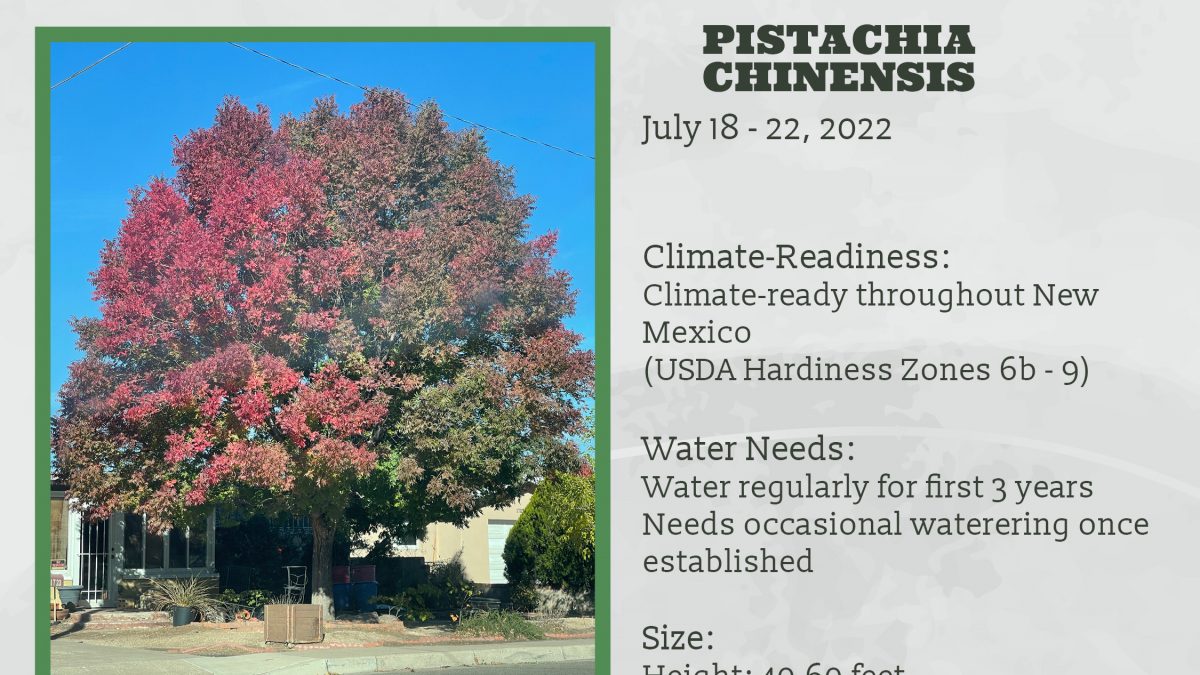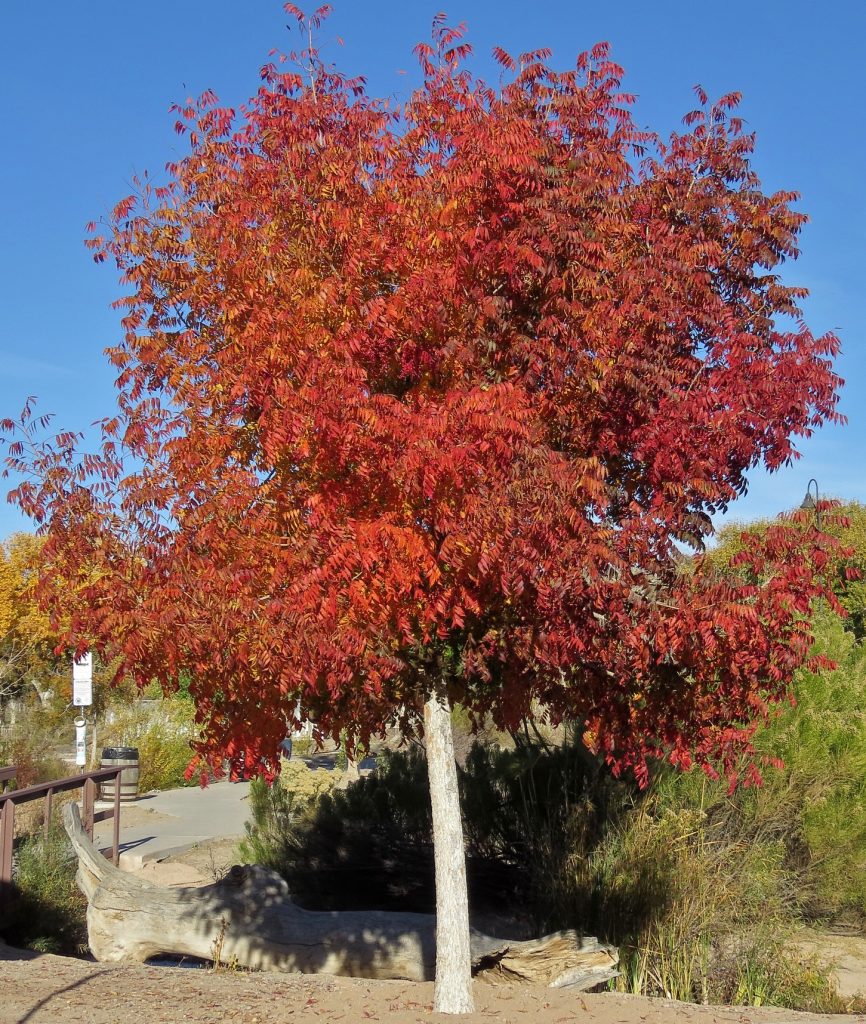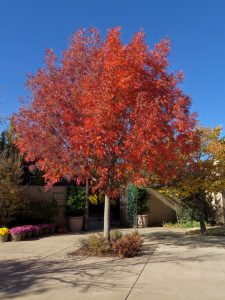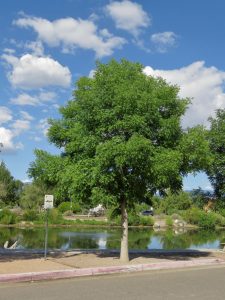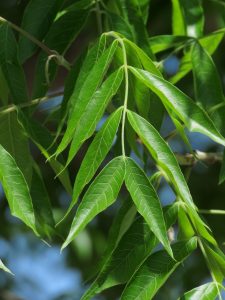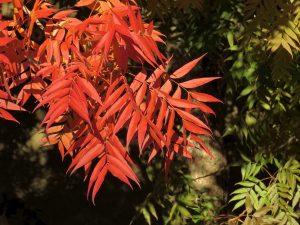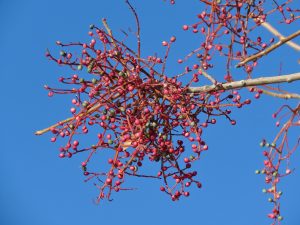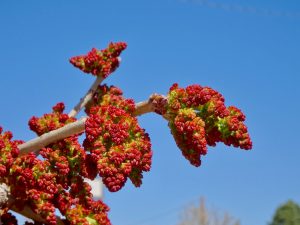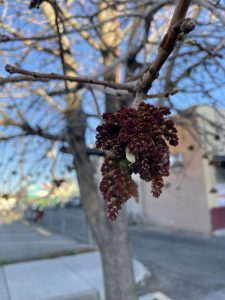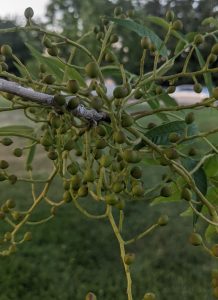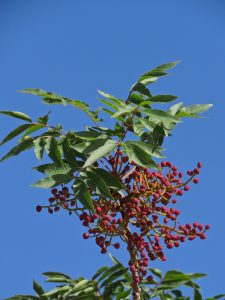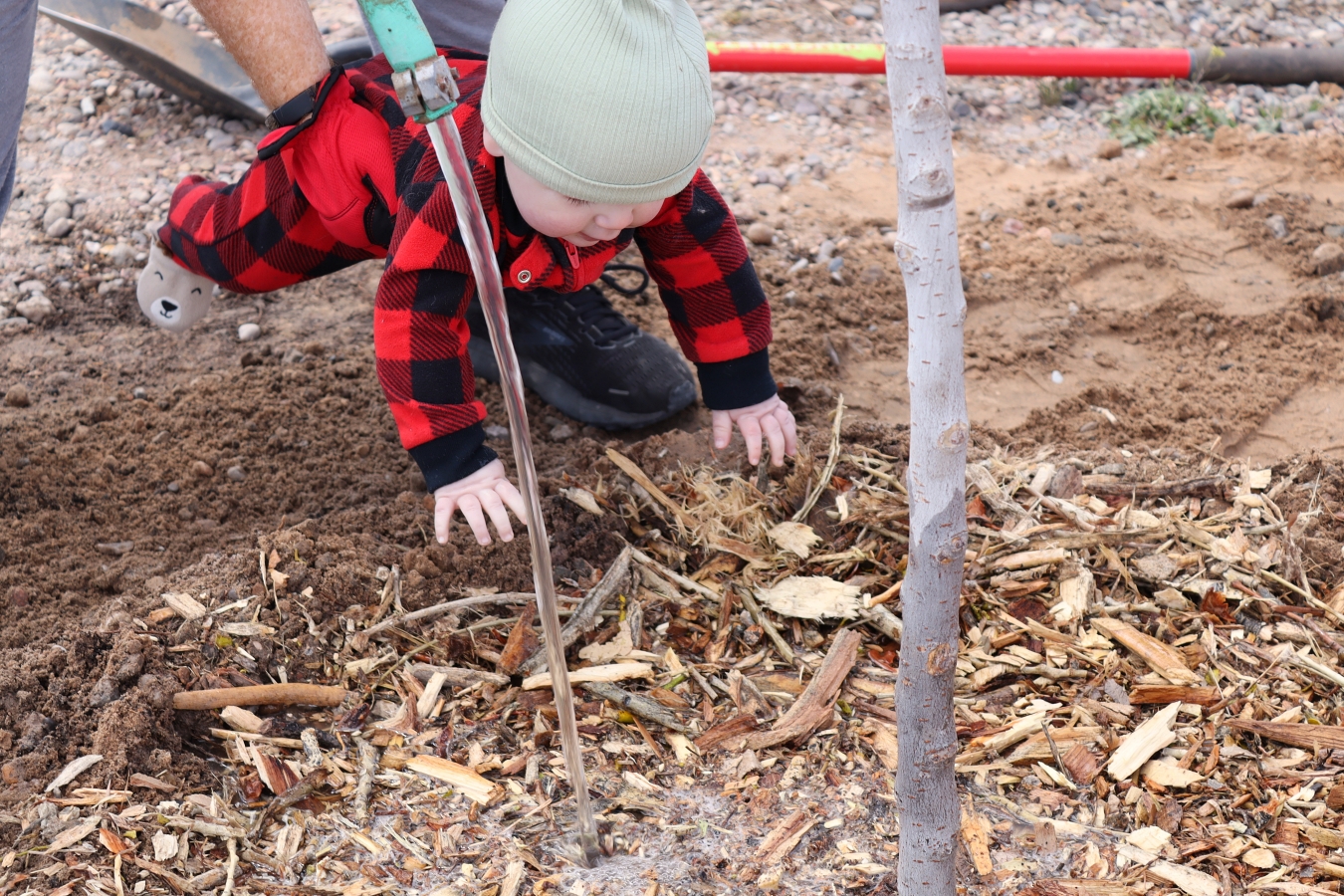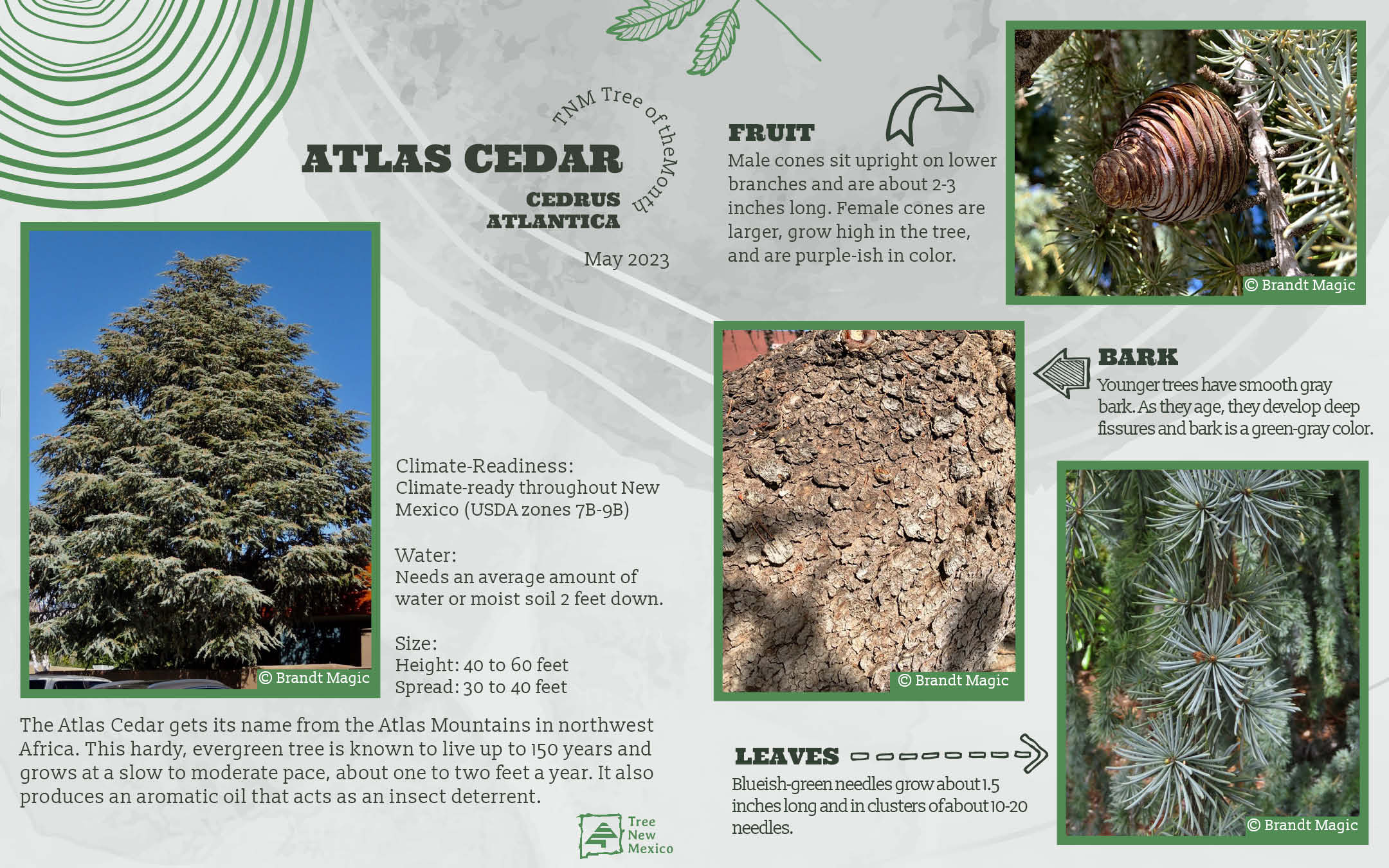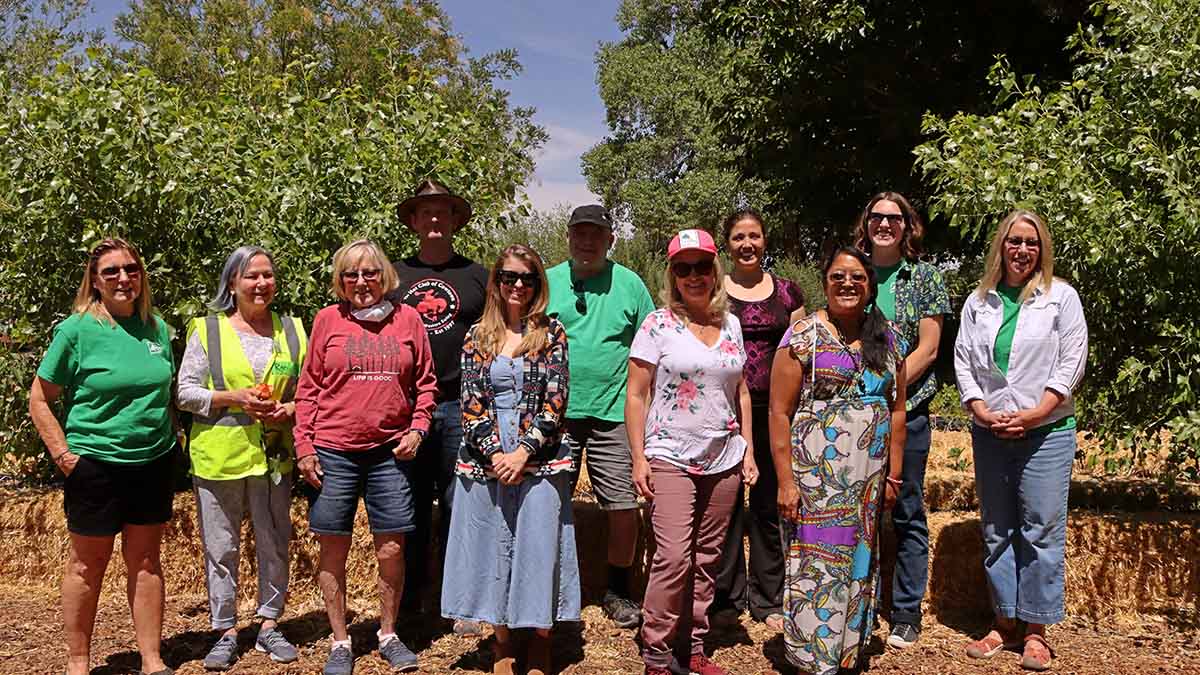
2022 ABC Tree Stewards Graduation
June 27, 2022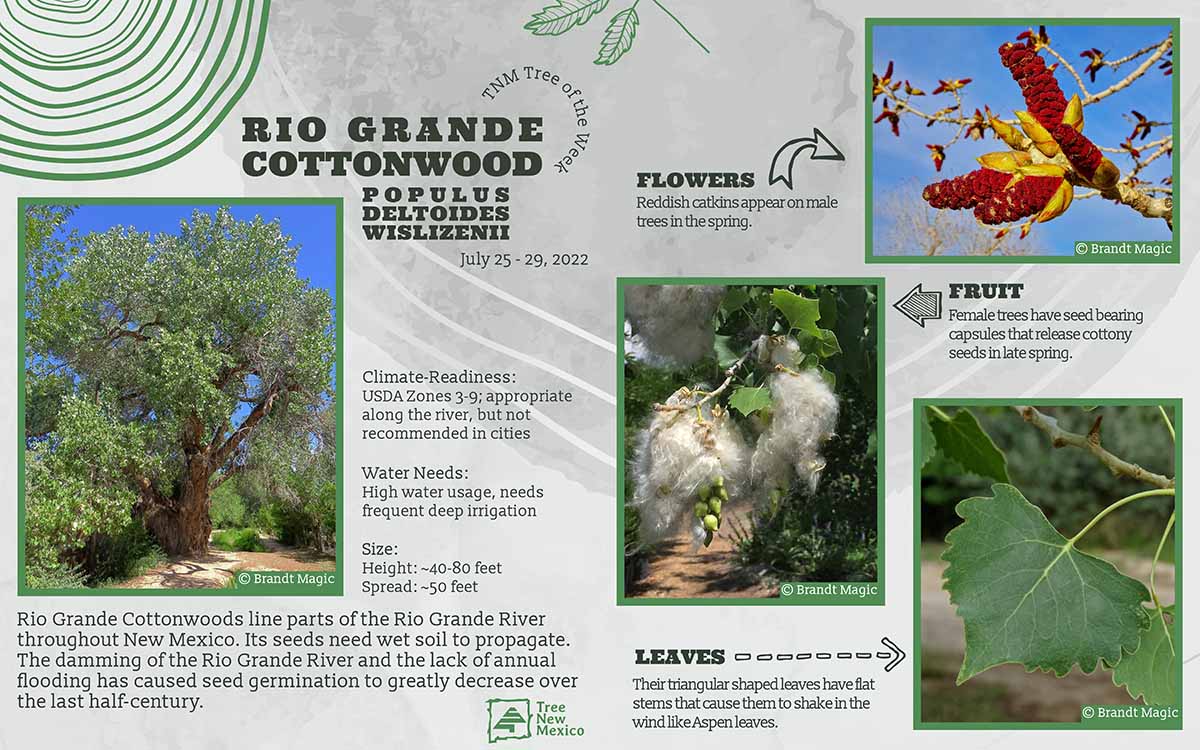
Rio Grande Cottonwood
July 27, 2022Scientific name: Pistachia chinensis
The Chinese Pistache is a medium sized ornamental tree from China and Taiwan that is extremely winter hardy and has a superior level of drought, heat and wind tolerance. The Chinese Pistache is the first shade tree to receive the coveted “Earth-Kind” designation from the Texas Agricultural Extension Service for its high levels of genetic resistance to insect and disease problems. The Chinese Pistache has extremely hard, durable wood which helps protect the tree from wind, ice and decay. Chinese Pistache trees have a medium to fine textured foliage that remains an attractive deep green color during the growing season and a spectacular fall color in shades of orange, red, and crimson. In the summer the female Chinese Pistache produces panicles of inconspicuous red dish flowers that are followed by small green berries that turn red to reddish-purple in the fall, which are relished by birds.
Description: Related to the deciduous sumacs (Rhus species). Not only are the leaves similar to sumac, Chinese Pistache has the same luminous orange-red autumn color. Although young trees may not grow symmetrically, in time they become regular and rounded to 60 feet tall and nearly as wide. With a male tree nearby, female trees will bear small red fruits; these turn dark blue when they ripen but are not especially showy. This is the only tree adapted to desert conditions that will provide bright red autumn color. Reliable tree for parks, street, lawn, patio, or garden corner.
Leaves: Foliage comprised of 1-foot long leaves with 4-inch, narrow, paired leaflets.
Fruit: Fruit on female trees bright red, turning dark blue.
Water Needs: Regular watering until well established – at least three years. Then it is drought tolerant, needing only occasional deep watering.
Disease: Resistant to oak root fungus. Is susceptible to the root fungus that kills Russian Olive, as are members of the sumac family.
Care: Stake young trees, if needed, and prune them for the first few years to develop branching high enough to walk under.
Information from Treeland Nursery
- Chinese Pistache in Fall (© Brandt Magic)
- Chinese Pistache (© Brandt Magic)
- Chinese Pistache Leaves (© Brandt Magic)
- Chinese Pistache Leaves in Fall (© Brandt Magic)
- Chinese Pistache Berries (© Brandt Magic)
- Chinese Pistache Flowers (© Brandt Magic)
- Chinese Pistache Flowers (© Brandt Magic)
- Chinese Pistache Berries (© Rachel Hendrix)
- Chinese Pistache Berries (© Brandt Magic)

